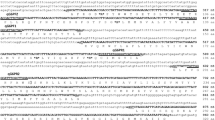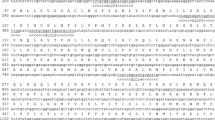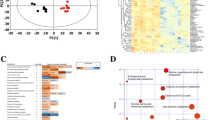Abstract
Animals suffer hypoxia when their oxygen consumption is larger than the oxygen available. Hypoxia affects the white shrimp Penaeus (Litopenaeus) vannamei, both in their natural habitat and in cultivation farms. Shrimp regulates some enzymes that participate in energy production pathways as a strategy to survive during hypoxia. Glucose-6-phosphatase (G6Pase) is key to maintain blood glucose homeostasis through gluconeogenesis and glycogenolysis. We previously reported a shrimp G6Pase gene (G6Pase1) and in this work, we report a second isoform that we named G6Pase2. The expression of the two isoforms was evaluated in oxygen limited conditions and during silencing of the transcription factor HIF-1. High G6Pase activity was detected in hepatopancreas followed by muscle and gills under good oxygen and feeding conditions. Gene expression of both isoforms was analyzed in normoxia, hypoxia and reoxygenation in hepatopancreas and gills, and in HIF-1-silenced shrimp. In fed shrimp with normal dissolved oxygen (DO) (5.0 mg L− 1 DO) the expression of G6Pase1 was detected in gills, but not in hepatopancreas or muscle, while G6Pase2 expression was undetectable in all three tissues. In hepatopancreas, G6Pase1 is induced at 3 and 48 h of hypoxia, while G6Pase2 is down-regulated in the same time points but in reoxygenation, both due to the knock-down of HIF-1. In gills, only G6Pase1 was detected, and was induced by the silencing of HIF-1 only after 3 h of reoxygenation. Therefore, the expression of the two isoforms appears to be regulated by HIF-1 at transcriptional level in response to oxygen deprivation and subsequent recovery of oxygen levels.







Similar content being viewed by others
Data availability
The datasets generated during and/or analysed during the current study are available from the corresponding author on reasonable request.
References
Altschul SF, Gish W, Miller W et al (1990) Basic local alignment search tool. J Mol Biol 215:403–410. https://doi.org/10.1016/S0022-2836(05)80360-2
Arion WJ (1989) [7] Measurement of intactness of rat liver endoplasmic reticulum. In: Methods in Enzymology. Academic, Cambridge, pp 58–67
Baker R, Fujiwara M, Minello TJ (2014) Juvenile growth and mortality effects on white shrimp Litopenaeus setiferus population dynamics in the northern Gulf of Mexico. Fish Res 155:74–82. https://doi.org/10.1016/j.fishres.2014.02.026
Bradford MM (1976) A rapid and sensitive method for the quantitation of microgram quantities of protein utilizing the principle of protein-dye binding. Anal Biochem 72:248–254. https://doi.org/10.1016/0003-2697(76)90527-3
Breitburg D, Levin LA, Oschlies A et al (2018) Declining oxygen in the global ocean and coastal waters. Science 359:eaam7240. https://doi.org/10.1126/science.aam7240
Burchell A, Hume R, Burchell B (1988) A new microtechnique for the analysis of the human hepatic microsomal glucose-6-phosphatase system. Clin Chim Acta 173:183–191. https://doi.org/10.1016/0009-8981(88)90256-2
Camacho-Jiménez L, Peregrino-Uriarte AB, Martínez-Quintana JA, Yepiz-Plascencia G (2018) The glyceraldehyde-3-phosphate dehydrogenase of the shrimp Litopenaeus vannamei: molecular cloning, characterization and expression during hypoxia. Mar Environ Res 138:65–75. https://doi.org/10.1016/j.marenvres.2018.04.003
Camacho-Jiménez L, Leyva-Carrillo L, Peregrino-Uriarte AB et al (2019) Regulation of glyceraldehyde-3-phosphate dehydrogenase by hypoxia inducible factor 1 in the white shrimp Litopenaeus vannamei during hypoxia and reoxygenation. Comp Biochem Physiol Part A Mol Integr Physiol 235:56–65. https://doi.org/10.1016/j.cbpa.2019.05.006
Chang ES, Thiel M (2015) The natural history of the crustacea. Oxford University Press, New York City, pp 391–419
Chausson F, Regnault M (1995) Teneur en glycogène des branchies de Carcinus maenas (Crustacé, Décapode): Comparaison entre branchies antérieures et postérieures. Cah Biol Mar 36:291–297
Cota-Ruiz K, Peregrino-Uriarte AB, Felix-Portillo M et al (2015) Expression of fructose 1,6-bisphosphatase and phosphofructokinase is induced in hepatopancreas of the white shrimp Litopenaeus vannamei by hypoxia. Mar Environ Res 106:1–9. https://doi.org/10.1016/j.marenvres.2015.02.003
Cota-Ruiz K, Leyva-Carrillo L, Peregrino-Uriarte AB et al (2016) Role of HIF-1 on phosphofructokinase and fructose 1, 6-bisphosphatase expression during hypoxia in the white shrimp Litopenaeus vannamei Comp Biochem Physiol Part A Mol Integr Physiol 198:1–7. https://doi.org/10.1016/j.cbpa.2016.03.015
Dobson L, Reményi I, Tusnády GE (2015) CCTOP: a Consensus constrained TOPology prediction web server. Nucleic Acids Res 43:W408–W412. https://doi.org/10.1093/nar/gkv451
Duarte-Gutiérrez J, Peregrino-Uriarte AB, Gómez-Jiménez S et al (2021) HIF-1 is involved in the regulation of expression of metallothionein and apoptosis incidence in different oxygen conditions in the white shrimp Litopenaeus vannamei Comp Biochem Physiol Part A Mol Integr Physiol 262:111072. https://doi.org/10.1016/j.cbpa.2021.111072
Ghaffari N, Sanchez-Flores A, Doan R et al (2014) Novel transcriptome assembly and improved annotation of the whiteleg shrimp (Litopenaeus vannamei), a dominant crustacean in global seafood mariculture. Sci Rep 4:7081. https://doi.org/10.1038/srep07081
Ghosh A, Shieh JJ, Pan CJ et al (2002) The catalytic center of glucose-6-phosphatase HIS176 is the nucleophile forming the phosphohistidine-enzyme intermediate during catalysis. J Biol Chem 277:32837–32842. https://doi.org/10.1074/jbc.M201853200
Giraud-Billoud M, Rivera-Ingraham GA, Moreira DC et al (2019) Twenty years of the ‘Preparation for oxidative stress’ (POS) theory: ecophysiological advantages and molecular strategies. Comp Biochem Physiol Part A Mol Integr Physiol 234:36–49. https://doi.org/10.1016/j.cbpa.2019.04.004
Granillo-Luna ON, Hernandez-Aguirre LE, Peregrino-Uriarte AB et al (2022) The anaplerotic pyruvate carboxylase from white shrimp Litopenaeus vannamei: gene structure, molecular characterization, protein modelling and expression during hypoxia. Comp Biochem Physiol Part A Mol Integr Physiol 269:111212. https://doi.org/10.1016/j.cbpa.2022.111212
Han SY, Wang BJ, Liu M et al (2017) Effect of cyclic serious/medium hypoxia stress on the survival, growth performance and resistance against Vibrio parahemolyticus of white shrimp Litopenaeus vannamei Invertebr Surviv J 14:259–270. https://doi.org/10.25431/1824-307X/isj.v14i1.259-270
Hernández-Aguirre LE, Cota-Ruiz K, Peregrino-Uriarte AB et al (2021) The gluconeogenic glucose-6-phosphatase gene is expressed during oxygen-limited conditions in the white shrimp Penaeus (Litopenaeus) vannamei: molecular cloning, membrane protein modeling and transcript modulation in gills and hepatopancreas. J Bioenerg Biomembr 3:449–461. https://doi.org/10.1007/s10863-021-09903-6
Hutton JC, O’Brien RM (2009) Glucose-6-phosphatase catalytic subunit gene family. J Biol Chem 284:29241–29245. https://doi.org/10.1074/jbc.R109.025544
Jitrapakdee S (2012) Transcription factors and coactivators controlling nutrient and hormonal regulation of hepatic gluconeogenesis. Int J Biochem Cell Biol 44:33–45. https://doi.org/10.1016/j.biocel.2011.10.001
Le SQ, Gascuel O (2008) An improved general amino acid replacement matrix. Mol Biol Evol 25:1307–1320. https://doi.org/10.1093/molbev/msn067
Lord-Dufour S, Copland IB, Levros L-C et al (2009) Evidence for transcriptional regulation of the glucose-6-phosphate transporter by HIF-1α: Targeting G6PT with mumbaistatin analogs in hypoxic mesenchymal stromal cells. Stem Cells 27:489–497. https://doi.org/10.1634/stemcells.2008-0855
Martins TL, Chittó ALF, Rossetti CL et al (2011) Effects of hypo- or hyperosmotic stress on lipid synthesis and gluconeogenic activity in tissues of the crab neohelice granulata Comp Biochem Physiol Part A Mol Integr Physiol 158:400–405. https://doi.org/10.1016/j.cbpa.2010.11.023
Pérez-Rostro CI, Racotta IS, Ibarra AM (2004) Decreased genetic variation in metabolic variables of Litopenaeus vannamei shrimp after exposure to acute hypoxia. J Exp Mar Biol Ecol 302:189–200. https://doi.org/10.1016/j.jembe.2003.10.010
Reyes-Ramos CA, Peregrino-Uriarte AB, Cota-Ruiz K et al (2018) Phosphoenolpyruvate carboxykinase cytosolic and mitochondrial isoforms are expressed and active during hypoxia in the white shrimp Litopenaeus vannamei Comp Biochem Physiol B Biochem Mol Biol 226:1–9. https://doi.org/10.1016/j.cbpb.2018.08.001
Rosas C, Martinez E, Gaxiola G et al (1999) The effect of dissolved oxygen and salinity on oxygen consumption, ammonia excretion and osmotic pressure of Penaeus setiferus (Linnaeus) juveniles. J Exp Mar Biol Ecol 234:41–57. https://doi.org/10.1016/S0022-0981(98)00139-7
Schmittgen TD, Livak KJ (2008) Analyzing real-time PCR data by the comparative C T method. Nat Protoc 3:1101–1108. https://doi.org/10.1038/nprot.2008.73
Scholnick DA, Barabas AE, Cowan SS (2006) The influence of chloride on glucose export in marine crabs: sensitivity of glucose-6-phosphatase to chloride ion. J Crustacean Biol 26:510–514. https://doi.org/10.1651/S-2669a.1
Seidman ER, Lawrence AL (1985) Growth, feed digestibility, and proximate body composition of juvenile Penaeus vannamei and Penaeus monodon grown at different dissolved oxygen levels. J World Aquac Soc 16:333–346. https://doi.org/10.1111/j.1749-7345.1985.tb00214.x
Semenza GL (2007) Hypoxia-inducible factor 1 (HIF-1) pathway. Sci STKE 2007:cm8. https://doi.org/10.1126/stke.4072007cm8
Soñanez-Organis JG, Peregrino-Uriarte AB, Gómez-Jiménez S et al (2009) Molecular characterization of hypoxia inducible factor-1 (HIF-1) from the white shrimp Litopenaeus vannamei and tissue-specific expression under hypoxia. Comp Biochem Physiol C Toxicol Pharmacol 150:395–405. https://doi.org/10.1016/j.cbpc.2009.06.005
Soñanez-Organis JG, Racotta IS, Yepiz-Plascencia G (2010) Silencing of the hypoxia inducible factor 1 –HIF-1- obliterates the effects of hypoxia on glucose and lactate concentrations in a tissue-specific manner in the shrimp Litopenaeus vannamei J Exp Mar Biol Ecol 393:51–58. https://doi.org/10.1016/j.jembe.2010.06.031
Soñanez-Organis JG, Peregrino-Uriarte AB, Sotelo-Mundo RR et al (2011) Hexokinase from the white shrimp Litopenaeus vannamei: cDNA sequence, structural protein model and regulation via HIF-1 in response to hypoxia. Comp Biochem Physiol B Biochem Mol Biol 158:242–249. https://doi.org/10.1016/j.cbpb.2010.12.006
Soñanez-Organis JG, Rodriguez-Armenta M, Leal-Rubio B et al (2012) Alternative splicing generates two lactate dehydrogenase subunits differentially expressed during hypoxia via HIF-1 in the shrimp Litopenaeus vannamei Biochimie 94:1250–1260. https://doi.org/10.1016/j.biochi.2012.02.015
Spyropoulos IC, Liakopoulos TD, Bagos PG, Hamodrakas SJ (2004) TMRPres2D: high quality visual representation of transmembrane protein models. Bioinformatics 20:3258–3260. https://doi.org/10.1093/bioinformatics/bth358
Stukey J, Carman GM (1997) Identification of a novel phosphatase sequence motif. Protein Sci 6:469–472
Tamura K, Stecher G, Kumar S (2021) MEGA11: molecular evolutionary genetics analysis version 11. Mol Biol Evol 38:3022–3027. https://doi.org/10.1093/molbev/msab120
Thabrew MI, Poat PC, Munday KA (1971) Carbohydrate metabolism in Carcinus maenas gill tissue. Comp Biochem Physiol B Biochem Mol Biol 40:531–541. https://doi.org/10.1016/0305-0491(71)90238-0
Trasviña-Arenas CH, Garcia-Triana A, Peregrino-Uriarte AB, Yepiz-Plascencia G (2013) White shrimp Litopenaeus vannamei catalase: gene structure, expression and activity under hypoxia and reoxygenation. Comp Biochem Physiol B Biochem Mol Biol 164:44–52. https://doi.org/10.1016/j.cbpb.2012.10.004
Wallert MA, Foster JD, Scholnick DA et al (2001) Kinetic analysis of glucose-6-phosphatase: an investigative approach to carbohydrate metabolism and kinetics. Biochem Mol Biol Educ 29:199–203. https://doi.org/10.1111/j.1539-3429.2001.tb00121.x
Wang Y, Wang H, Li M et al (2015) Identification, expression and regulation of amphioxus G6Pase gene with an emphasis on origin of liver. Gen Comp Endocrinol 214:9–16. https://doi.org/10.1016/j.ygcen.2014.12.021
Yun Z, Maecker HL, Johnson RS, Giaccia AJ (2002) Inhibition of PPARγ2 gene expression by the HIF-1-regulated gene DEC1/Stra13: a mechanism for regulation of adipogenesis by hypoxia. Dev Cell 2:331–341. https://doi.org/10.1016/S1534-5807(02)00131-4
Zhang X, Yuan J, Sun Y et al (2019) Penaeid shrimp genome provides insights into benthic adaptation and frequent molting. Nat Commun 10:356. https://doi.org/10.1038/s41467-018-08197-4
Zhang Y, Zhang Z, Liang XF et al (2021) Response of g6p homologous genes in chinese perch to high-carbohydrate diets. Aquac Rep 19:100581. https://doi.org/10.1016/J.AQREP.2020.100581
Acknowledgements
We are grateful for funding to CONACyT, Ciencia Básica grant A1-S-24557 to GYP, and for Ph.D. studies to LEHA. We thank Dr. S. Gómez-Jiménez, Biologists A. Gamez-Alejo, M.C.J. Zamorano-Apodaca of the Marine Invertebrates Physiology Laboratory of CIAD for technical help provided in the hypoxia bioassays.
Funding
This study was funded by the National Science and Technology Council, Mexico (CONACyT), grant Ciencia Básica A1-S-24557 to GYP and a scholarship for Ph.D studies to LEHA.
Author information
Authors and Affiliations
Contributions
LEHA performed the experiments, data analysis and writing of original draft. JDG performed the HIF-1 silencing bioassay. ABPU supervised gene expression experiments and methodology, gave helpful suggestions, critically revised and approved the final manuscript. LLC and EVS helped with the enzyme activity assays, MEB supervised the statistical analysis. GYP conceived, designed and supervised the experiments, critically revised, edited and approved the final manuscript.
Corresponding author
Ethics declarations
Ethics approval
The shrimp bioassay was done following international recommendations for animals handling and experimentation https://arriveguidelines.org. The bioassay facility laboratory is certified by EMA (Entidad Mexicana de Acreditación) SA-0758-030/16 to perform marine animal tests.
Competing interests
The authors declare no competing or financial interest.
Additional information
Publisher’s note
Springer Nature remains neutral with regard to jurisdictional claims in published maps and institutional affiliations.
Rights and permissions
Springer Nature or its licensor (e.g. a society or other partner) holds exclusive rights to this article under a publishing agreement with the author(s) or other rightsholder(s); author self-archiving of the accepted manuscript version of this article is solely governed by the terms of such publishing agreement and applicable law.
About this article
Cite this article
Hernández-Aguirre, L.E., Peregrino-Uriarte, A.B., Duarte-Gutiérrez, J.L. et al. Shrimp Glucose-6-phosphatase 2 (G6Pase 2): a second isoform of G6Pase in the Pacific white shrimp and regulation of G6Pase 1 and 2 isoforms via HIF-1 during hypoxia and reoxygenation in juveniles. J Bioenerg Biomembr 55, 137–150 (2023). https://doi.org/10.1007/s10863-023-09960-z
Received:
Accepted:
Published:
Issue Date:
DOI: https://doi.org/10.1007/s10863-023-09960-z




